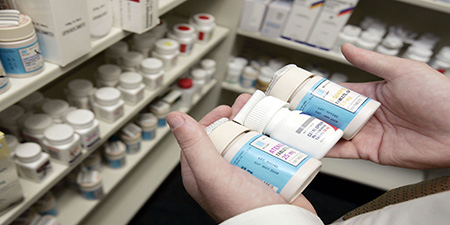Every job has a potential for making errors. Getting the wrong entrée at a restaurant happens every now and then, and I took home another person’s dry cleaning last month when the clerk handed me the wrong items. Filling prescriptions, one would think, has a very low rate for errors. That’s not entirely accurate.
Most patients who deal with buying prescriptions on a regular basis probably think that with advances in computer technology and the high level of training for pharmacists and pharmacy techs, they don’t even need to check what’s in the little brown bottles. But studies show it’s smart to check, and double-check.
Big Mistakes
One study revealed a dispensing error rate “of more than one in five prescriptions” (Journal of the American Pharmacists Association). Last year, more than 4 billion prescriptions were filled in the U.S. A 20 percent error rate would represent 800 million mistakes. Though most are relatively minor, some have led to disability and even death.
Another study concluded that error rates are actually getting higher, especially in large medical centers and hospitals. Errors included mistakes on labels and duplicate orders, but one of the most common errors was incorrect dosage for warfarin, also known as brand name Coumadin, which is a blood-thinning medication. When warfarin is administered in too-high dosages, very serious internal bleeding may occur.
 From the results the Journal of the American Pharmacists Association study: Of 100 prescriptions dispensed, 22 had one or more deviation from the physician’s written order, for a 22% dispensing error rate. Three of the errors were judged to be potentially harmful when dispensed to a typical patient requiring these therapies. A total of 43 shoppers (43%) received verbal counseling, including 16 cases in which the shopper prompted counseling. All shoppers received written information with their prescription, covering an average of 90% of the required topics.
From the results the Journal of the American Pharmacists Association study: Of 100 prescriptions dispensed, 22 had one or more deviation from the physician’s written order, for a 22% dispensing error rate. Three of the errors were judged to be potentially harmful when dispensed to a typical patient requiring these therapies. A total of 43 shoppers (43%) received verbal counseling, including 16 cases in which the shopper prompted counseling. All shoppers received written information with their prescription, covering an average of 90% of the required topics.
The results also included this very disturbing conclusion: Some 68% of the warfarin shoppers purchased aspirin without the pharmacist verbally warning about taking the drugs simultaneously. Conclusion: The dispensing error rate of more than one in five prescriptions is similar to the rate found in a similar study conducted 14 years ago, but counseling frequency has decreased significantly during the period.
Drive-Thru Counseling?
Today’s pharmacies have drive-thru windows, which obviously makes counseling with a pharmacist very impractical. Patients should understand that taking just a few minutes to discuss side-effects and interactions may prevent a harmful side-effect from happening. Patients should also carefully examine their prescriptions to make sure they received the right medication and the correct dose.
Seek the Best Help
The Law Office of Lazarus and Lazarus has represented victims of pharmacy errors for over 20 years, and we are eminently qualified to handle any situation related to injuries, sickness, or death related to medication mistakes. A call to 954-356-0006 will put you in touch with Gary and Arleen Lazarus, personal injury attorneys who will carefully listen to your story and then recommend the best course of action for your individual situation.








Recent Comments